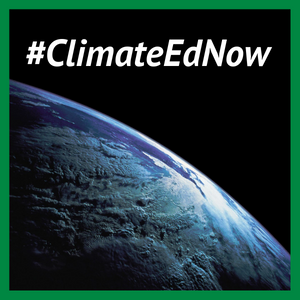 Conservationists and preservationists like John Muir and Aldo Leopold inspired generations of global citizens to appreciate the beauty of our natural world and the intrinsic value all life contains. These deep ecology theories and work by early environmentalists paved the way for the management of lands and natural resources and made explicit that preservation was the responsibility of individuals and society. They were the first to note the dire need for sustainable living much before they knew of the destructive behaviors and anthropogenic causes of climate change. Their love of nature was grounded in experience: total immersion in the natural world helped them develop their sense of stewardship and deep appreciation for the environment, and formed the basis for their ecological writings.
Conservationists and preservationists like John Muir and Aldo Leopold inspired generations of global citizens to appreciate the beauty of our natural world and the intrinsic value all life contains. These deep ecology theories and work by early environmentalists paved the way for the management of lands and natural resources and made explicit that preservation was the responsibility of individuals and society. They were the first to note the dire need for sustainable living much before they knew of the destructive behaviors and anthropogenic causes of climate change. Their love of nature was grounded in experience: total immersion in the natural world helped them develop their sense of stewardship and deep appreciation for the environment, and formed the basis for their ecological writings.
Muir and Leopold paved the way for future environmentalists and the development of countless pro-environmental behaviors of the 20th and 21st centuries. Meanwhile, work by Rachel Carson and others began to expose the environmental degradation caused by human behavior. Overexploitation of natural lands, indiscriminate use of dangerous pesticides, and unsustainable agricultural practices of the green revolution were products of commercialism, growth, and urbanization. The dichotomy between love of nature and prosperity, unfortunately, was established.
Environmental education has evolved immensely over the past 100 years based on the best science available. A constant is the idea that students best learn about nature and develop pro-environmental behaviors by being immersed in it. Deep ecology, conservation practices, and preservation all have roots in outdoor play and exploration. However, current research indicates that individuals may act more responsibly towards nature when global issues are framed through a social justice lens. In other words, the social connections individuals make within their community may influence environmental sustainability just as much as outdoor appreciation and experiences. The environmental justice movement was born.
Environmental justice addresses the disproportionate burden of environmental harm facing populations of mostly indigenous communities, communities of color, and working-class citizens. All people, regardless of race, class, or gender, should be afforded equal access to Earth’s resources as well as equal protection from environmental harm. Unfortunately, it is typically these marginalized groups who feel the burden of climate change the most. Underrepresented populations and developing nations are much less resilient when it comes to the rapid changes we are experiencing: intensified storms, devastating floods, drought, frequent forest fires, soil erosion and desertification, and food insecurity.

 Conservationists and preservationists like John Muir and Aldo Leopold inspired generations of global citizens to appreciate the beauty of our natural world and the intrinsic value all life contains. These deep ecology theories and work by early environmentalists paved the way for the management of lands and natural resources and made explicit that preservation was the responsibility of individuals and society. They were the first to note the dire need for sustainable living much before they knew of the destructive behaviors and anthropogenic causes of climate change. Their love of nature was grounded in experience: total immersion in the natural world helped them develop their sense of stewardship and deep appreciation for the environment, and formed the basis for their ecological writings.
Conservationists and preservationists like John Muir and Aldo Leopold inspired generations of global citizens to appreciate the beauty of our natural world and the intrinsic value all life contains. These deep ecology theories and work by early environmentalists paved the way for the management of lands and natural resources and made explicit that preservation was the responsibility of individuals and society. They were the first to note the dire need for sustainable living much before they knew of the destructive behaviors and anthropogenic causes of climate change. Their love of nature was grounded in experience: total immersion in the natural world helped them develop their sense of stewardship and deep appreciation for the environment, and formed the basis for their ecological writings.